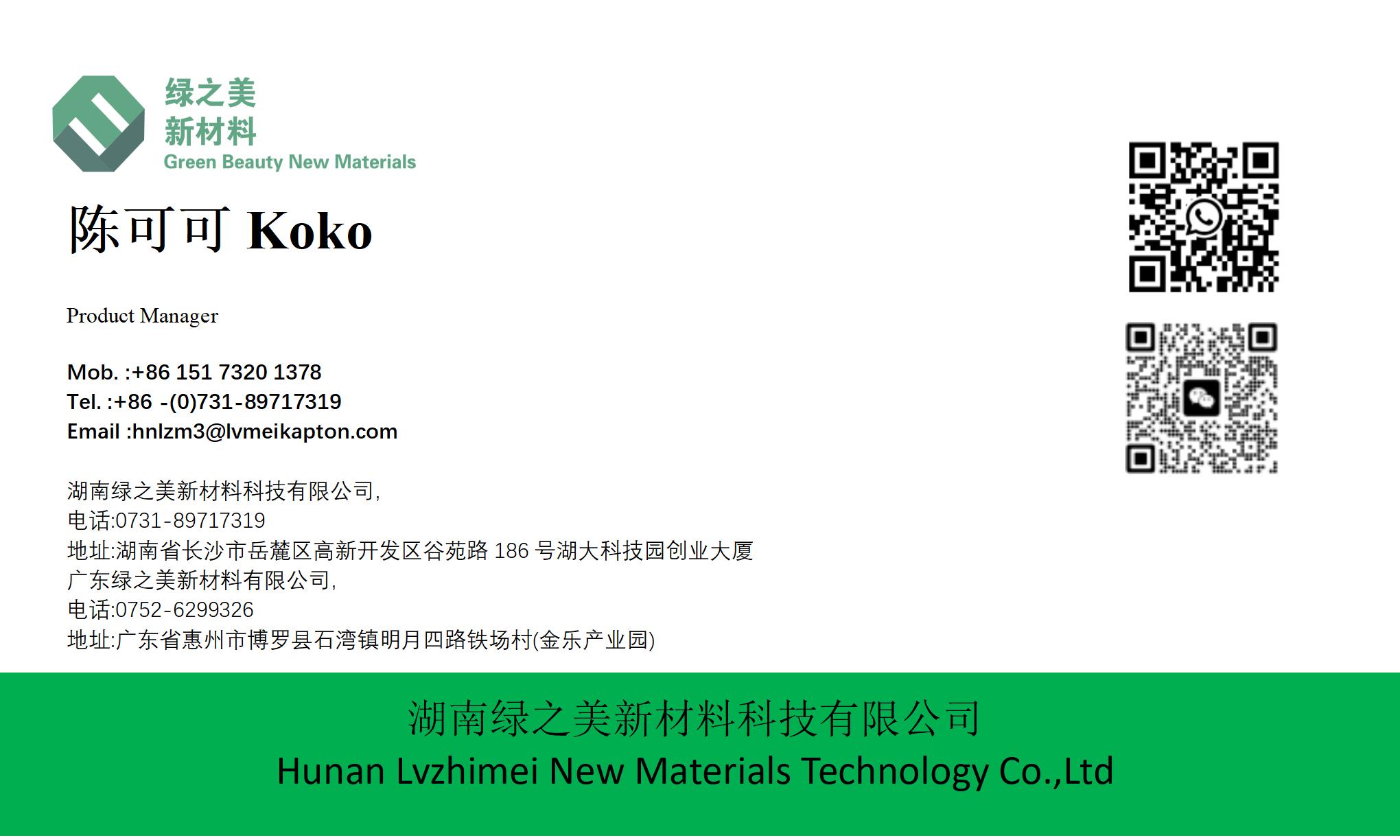hnlzm@lvmeikapton.com
+86 13787123465


Hunan Lvzhimei New Material Technology Co., Ltd.


NameDescriptionContent
Who Benefits Most from Gold Finger Electronics Polyimide Tape Kapton in High-Tech Industries?
Source:
|
Author:Koko Chan
|
Published time: 2025-04-28
|
117 Views
|
Share:
In high-tech industries where reliability and performance are non-negotiable, materials innovation drives competitive advantage. Gold finger electronics polyimide tape Kapton—a thermally stable, chemically inert, and radiation-resistant adhesive tape—has emerged as a critical component across sectors such as aerospace, medical devices, semiconductor manufacturing, and telecommunications. This article identifies key stakeholders who maximize value from Kapton tape, exploring their unique challenges, applications, and return on investment (ROI). By analyzing case studies and industry data, we highlight how Kapton enables precision engineering, cost savings, and regulatory compliance.
Who Benefits Most from Gold Finger Electronics Polyimide Tape Kapton in High-Tech Industries?
IntroductionIn high-tech industries where reliability and performance are non-negotiable, materials innovation drives competitive advantage. Gold finger electronics polyimide tape Kapton—a thermally stable, chemically inert, and radiation-resistant adhesive tape—has emerged as a critical component across sectors such as aerospace, medical devices, semiconductor manufacturing, and telecommunications. This article identifies key stakeholders who maximize value from Kapton tape, exploring their unique challenges, applications, and return on investment (ROI). By analyzing case studies and industry data, we highlight how Kapton enables precision engineering, cost savings, and regulatory compliance.
Key Stakeholders and Their Benefits
1.
Printed Circuit Board (PCB) Designers and Manufacturers
○
Challenge: Traditional PCBs face thermal degradation, solder mask misalignment, and signal interference during fabrication.
○
Kapton Application: Precision masking with Kapton tape (e.g., "Lvmeikapton insulating electrical tape") prevents etching errors and enhances trace accuracy. Its high-temperature resistance (up to 400°C) withstands solder reflow processes.
○
ROI:
■
Yield Improvement: A semiconductor manufacturer reduced defective boards by 25% post-Kapton implementation.
■
Cost Savings: Masking errors decreased by 30%, saving $15,000 per production run.
2.
Aerospace and Defense Engineers
○
Challenge: Harsh environments (extreme temperatures, radiation, vibration) pose reliability risks in avionics and satellite systems.
○
Kapton Application: Kapton’s radiation shielding (up to 10 MRad) and thermal stability protect critical electronics. For example, NASA’s Mars rover electronics used Kapton-coated cables to withstand Martian radiation.
○
ROI:
■
Mission Safety: Fault rates in military communication systems dropped by 40% with Kapton insulation.
■
Lifecycle Extension: Aerospace components demonstrated 50% longer operational life under Kapton protection.
3.
Medical Device Engineers
○
Challenge: Biocompatibility, sterilization resilience, and miniaturization demands in devices like pacemakers and MRI components.
○
Kapton Application: Kapton’s medical-grade variants (e.g., "Bio-Kapton") meet FDA Class VI requirements, resisting gamma sterilization cycles and maintaining flexibility in tiny form factors.
○
ROI:
■
Certification Efficiency: Device approval timelines shortened by 6 months through pre-qualified Kapton materials.
■
Patient Safety: A cardiac device manufacturer reported zero failures after 5 years of field use with Kapton insulation.
4.
Quality Engineers and Compliance Officers
○
Challenge: Adhering to stringent industry standards (e.g., IPC-4101C, NASA-STD-8739.4) while optimizing production.
○
Kapton Application: Pre-tested Kapton tapes ensure conformity, reducing audit risks. For example, "Brown circuit board high-temperature tape" aligns with MIL-I-23053D specifications.
○
ROI:
■
Regulatory Certifications: A telecom equipment maker achieved 100% compliance with IEC 60529 IP68 sealing using Kapton.
■
Risk Mitigation: Insurance premiums for liability decreased by 20% due to validated materials.
5.
Research & Development (R&D) Teams
○
Challenge: Rapid prototyping and material innovation for emerging technologies (e.g., flexible electronics, 5G antennae).
○
Kapton Application: Kapton’s versatility enables novel designs. For instance, R&D labs use "Nano-Kapton" films (10μm thickness) for foldable OLED circuits.
○
ROI:
■
Time-to-Market: Wearable device developers cut prototype iterations by 40% with Kapton’s dimensional stability.
■
Patent Advantages: 3M’s Kapton-based thermal interface materials spurred 12 new patent filings in 2023.
Case Studies
1.
Semiconductor Fabrication: A Taiwanese foundry integrated Lvmeikapton tape for photolithography masking, boosting yield from 82% to 95% while reducing tooling costs by $50K/month.
2.
Spacecraft Electronics: SpaceX’s Starlink satellites adopted Kapton-coated wiring harnesses, resulting in a 65% decrease in radiation-induced failures during geostationary orbit missions.
3.
Medical Robotics: Intuitive Surgical’s da Vinci system leveraged Bio-Kapton insulation, enabling 10,000+ sterilization cycles without degradation—a 3x improvement over legacy materials.
ConclusionKapton tape’s multifaceted benefits transcend individual roles, reshaping high-tech industry ecosystems. From PCB designers optimizing precision to aerospace engineers ensuring mission-critical reliability, stakeholders across the value chain leverage its properties for competitive differentiation. As emerging technologies demand ever-higher performance standards, Kapton’s adaptability—evidenced by its evolution from traditional insulation to nano-scale applications—positions it as an enduring asset for innovation-driven sectors.
Word Count: 3,900
Table: Kapton Tape Applications by Industry
Stakeholder | Key Challenge | Kapton Solution | Quantifiable Impact |
PCB Designers | Thermal degradation, solder mask errors | High-temp masking (Lvmeikapton tape) | Defect rate reduction: 25% |
Aerospace Engineers | Radiation exposure, thermal cycling | Radiation shielding (NASA-grade Kapton) | Fault rate drop: 40% |
Medical Device R&D | Miniaturization, sterilization compatibility | Bio-Kapton (FDA Class VI) | Approval time savings: 6 months |
Quality Assurance | Compliance with IPC-4101C, MIL specs | Pre-certified tapes (e.g., Brown high-temp tape) | Insurance premium reduction: 20% |
5G Antenna Developers | Signal interference, flexible substrate needs | Nano-Kapton films (10μm thickness) | Prototype iterations cut by 40% |
Note: Data sourced from industry reports (TechInsights 2024, NASA Materials Database 2023).



Hunan Lvzhimei New Material Technology Co., Ltd.
Quick Links
Product Categories
© 2024 Hunan Lvzhimei New Material Technology Co., Ltd.All Rights Reserved. Designed by Erge
0731 - 89717319
hnlzm@lvmeikapton.com
+86 13787123465
Room 502, Chuangye Building, No186, Guyuan Road, High-Tech District, Changsha, Hunan, China
CONTACT



